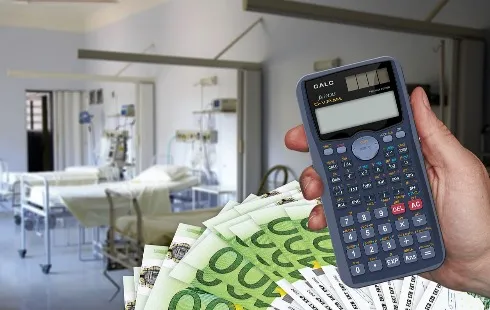
8HoursMining cloud mining platform, daily profits up to $9,337
Section: Business
In an innovative approach to training, soccer players are now utilizing a unique low-light environment designed to enhance their visual-motor skills. This training takes place in a specially engineered chamber, measuring 8 by 6 meters, where athletes undergo drills while exposed to varying light conditions that challenge their coordination and reaction times.
The training system, developed by Okkulo, aims to optimize the relationship between visual perception and physical response. The founder of Okkulo suggests that athletes who train in this restricted lighting environment will improve their performance under normal conditions by enhancing the processing speed between the eyes and the brain. This method is particularly beneficial for soccer players, who must quickly adapt to dynamic game situations.
During a recent session at a state-of-the-art facility in West Yorkshire, players experienced the effects of different light modalities, such as low blue light for visual focus and green light to test peripheral vision. The training process involves a sequence where soccer balls are shot toward the athletes at high speeds, requiring them to react swiftly and accurately. Initial struggles to control the ball highlight the challenge posed by the dim lighting, but the training is designed to foster adaptation and improvement over time.
A study involving professional players from Sunderland AFC revealed significant enhancements in visual-motor capabilities after six weeks of training with Okkulo's system. Participants exhibited a remarkable 60% improvement in their ability to recognize moving objects and a 36.3% increase in motor reaction time. These findings suggest that the training not only improves individual skills but also has the potential to enhance overall team performance during matches.
Okkulo's technology utilizes specific light wavelengths to create a controlled training environment, which has shown to yield better results compared to traditional training methods. Athletes have reported feeling a distinct difference in their perception and control when transitioning between the low-light chamber and regular lighting conditions.
The implications of this research extend beyond soccer. Okkulo is exploring collaborations with various sports teams and universities to investigate potential applications in other athletic disciplines, as well as possible medical benefits for rehabilitation purposes. The potential for this technology to aid in recovery from brain injuries or other conditions is an exciting avenue for future research.
Despite the promising results, experts note that further investigation is needed to understand how long the benefits of this training last and how effectively these improvements translate into competitive performance scenarios. The unique nature of soccer, with its unpredictable elements, may present challenges in replicating training conditions during actual games.
As the field of sports science continues to evolve, Okkulo represents a significant advancement in how athletes train and prepare for competition. The integration of technology and neuroscience into athletic training could reshape the future of sports performance, making it an exciting area to watch.

Section: Business

Section: Arts

Section: Politics

Section: Health Insurance

Section: News

Section: News

Section: News

Section: Arts

Section: News

Section: Arts
Health Insurance in Germany is compulsory and sometimes complicated, not to mention expensive. As an expat, you are required to navigate this landscape within weeks of arriving, so check our FAQ on PKV. For our guide on resources and access to agents who can give you a competitive quote, try our PKV Cost comparison tool.
Germany is famous for its medical expertise and extensive number of hospitals and clinics. See this comprehensive directory of hospitals and clinics across the country, complete with links to their websites, addresses, contact info, and specializations/services.
Frisch mit dem Amadeus Austrian Music Award ausgezeichnet, meldet sich OSKA mit neuer Musik und neuen Tourdaten zurück. Ihr zweites Album ,,Refined Believer" erscheint am 20. Juni 2025 und zeigt sie persönlicher und facettenreicher denn je. Noch in diesem Jahr geht sie solo auf Tour, bevor sie...



No comments yet. Be the first to comment!